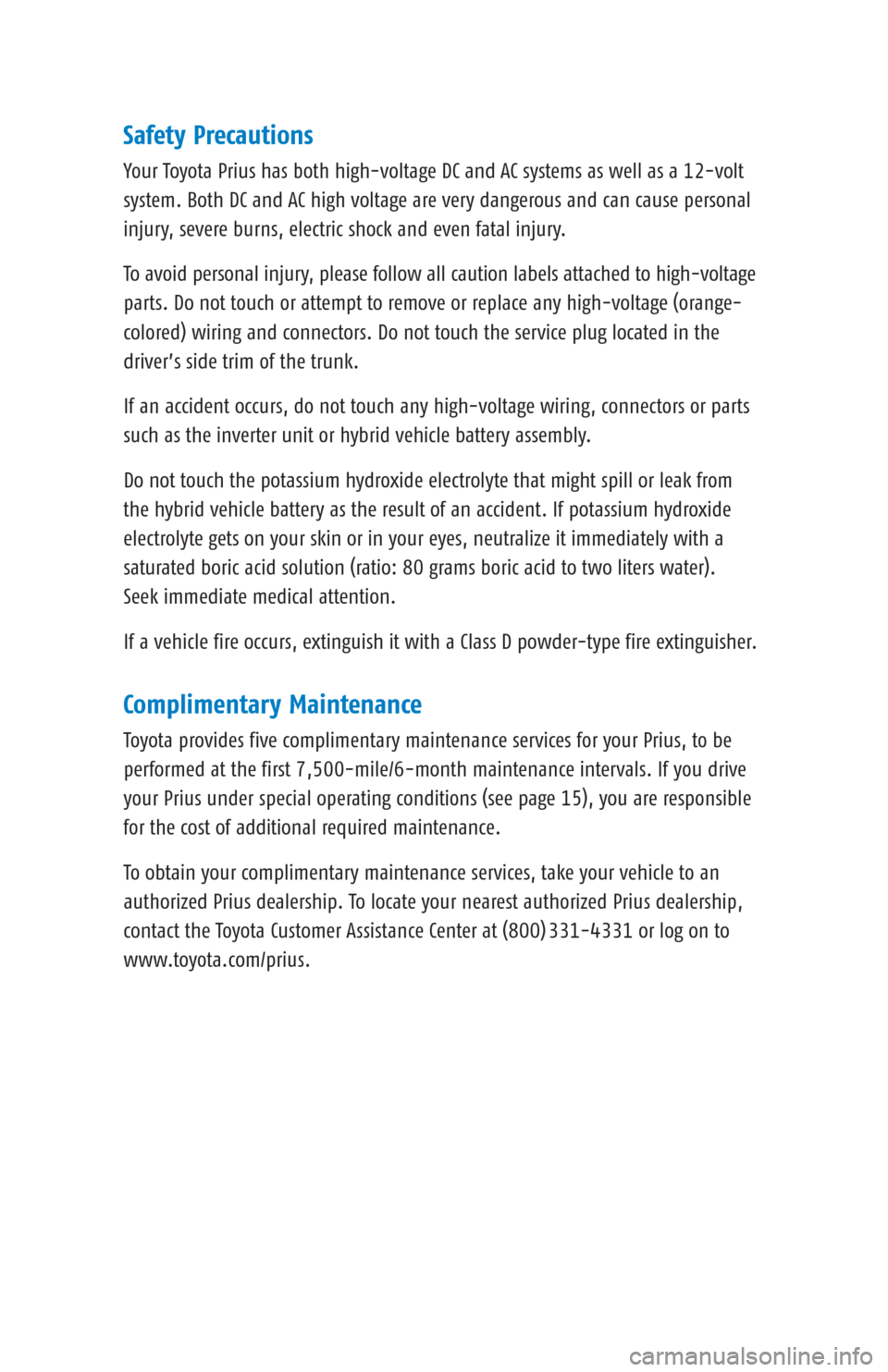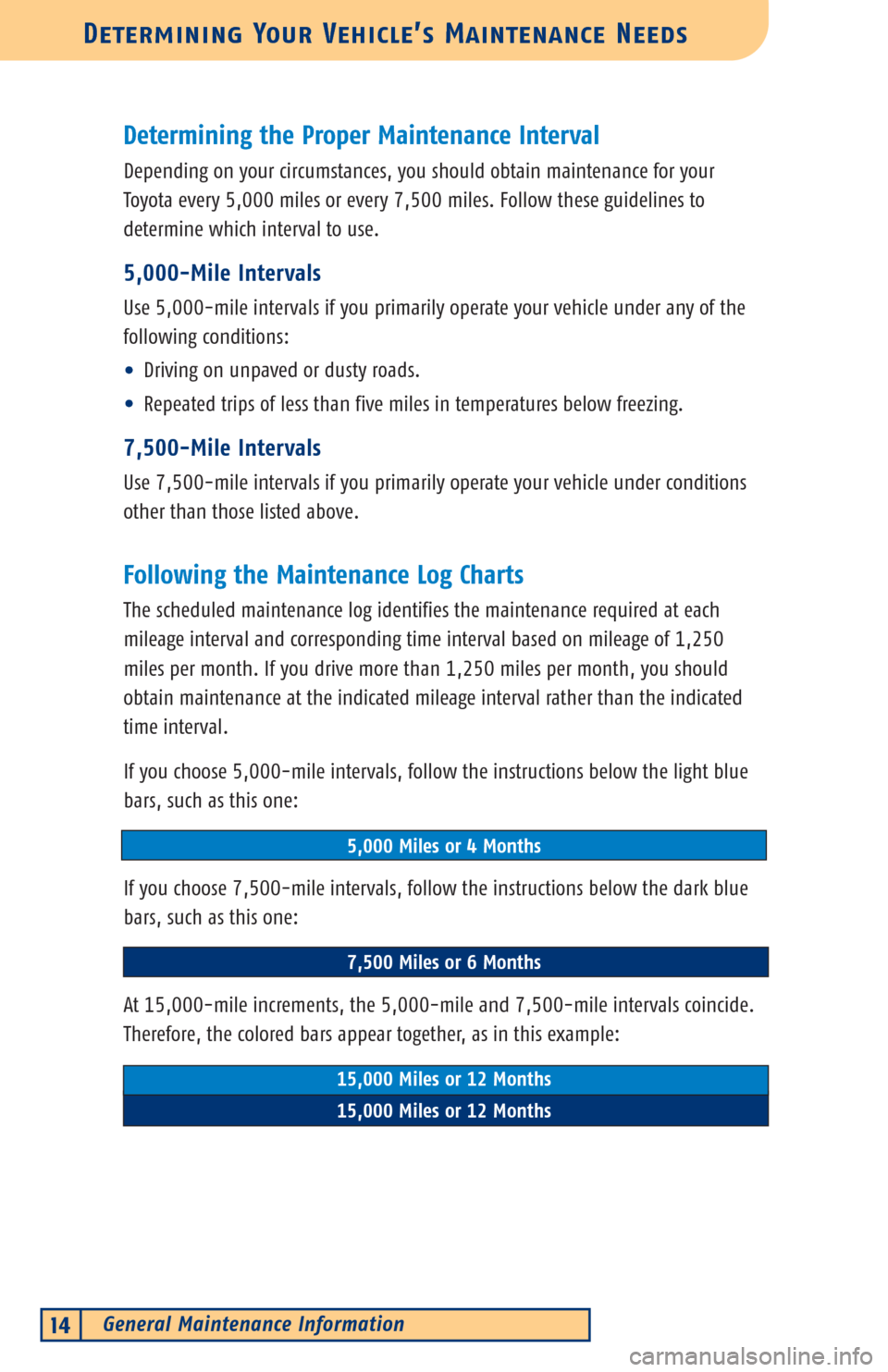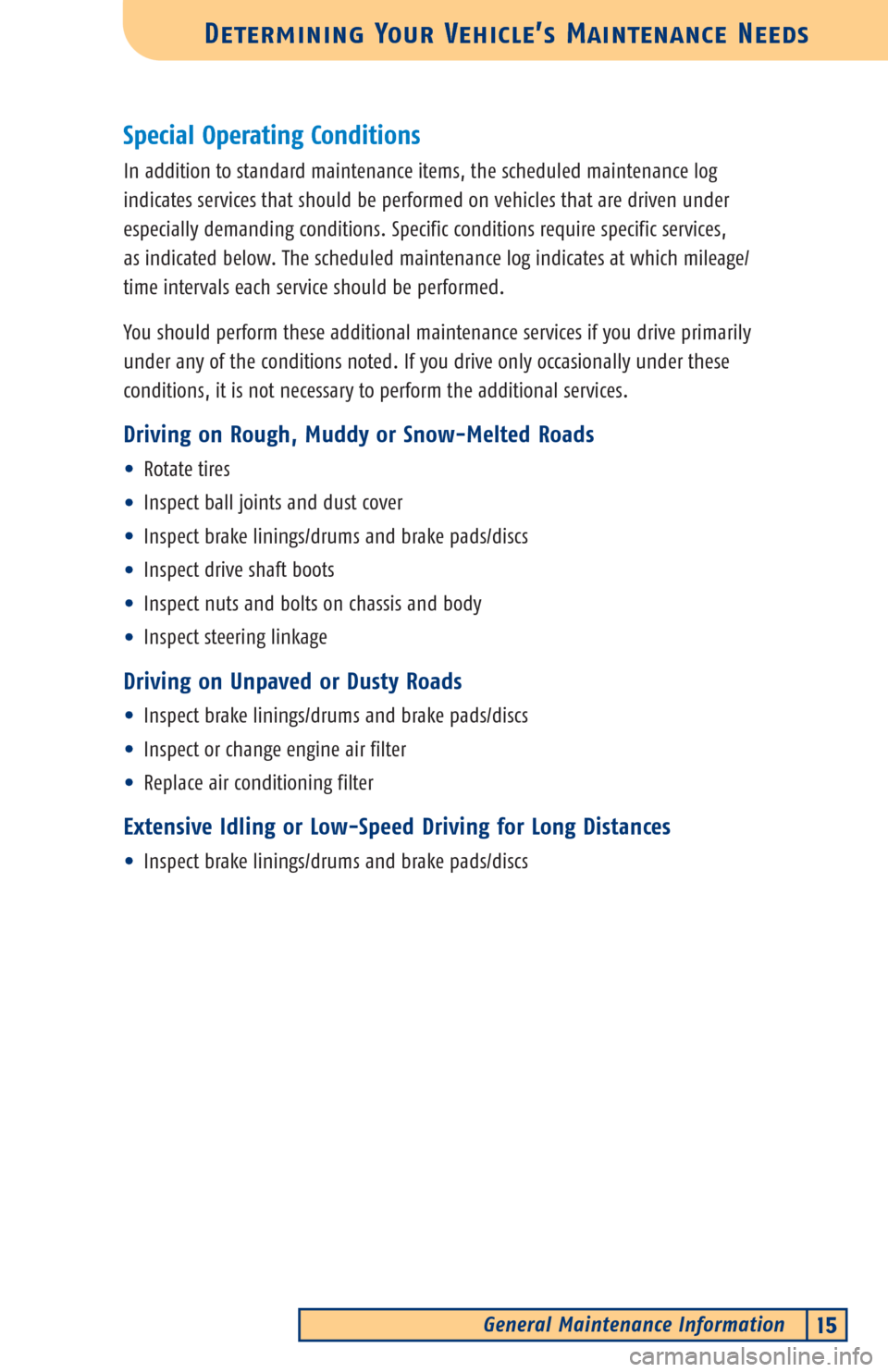ESP TOYOTA PRIUS 2002 1.G Scheduled Maintenance Guide
[x] Cancel search | Manufacturer: TOYOTA, Model Year: 2002, Model line: PRIUS, Model: TOYOTA PRIUS 2002 1.GPages: 44, PDF Size: 0.87 MB
Page 2 of 44

Safety Precautions
Your Toyota Prius has both high-voltage DC and AC systems as well as a 12-volt
system. Both DC and AC high voltage are very dangerous and can cause personal
injury, severe burns, electric shock and even fatal injury.
To avoid personal injury, please follow all caution labels attached to high-voltage
parts. Do not touch or attempt to remove orreplace any high-voltage (orange-
colored) wiring and connectors. Do not touch the service plug located in the
driver’s side trim of the trunk.
If an accident occurs, do not touch any high-voltage wiring, connectors or parts
such as the inverter unit or hybrid vehicle battery assembly.
Do not touch the potassium hydroxide electrolyte that might spill or leak from
the hybrid vehicle battery as the resultof an accident. If potassium hydroxide
electrolyte gets on your skin or in your eyes, neutralize it immediately with a
saturated boric acid solution (ratio: 80 grams boric acid to two liters water).
Seek immediate medical attention.
If a vehicle fire occurs, extinguish it with a Class D powder-type fire extinguisher.
Complimentary Maintenance
Toyota provides five complimentary maintenance services for your Prius, to be
performed at the first7,500-mile/6-month maintenance intervals. If you drive
your Prius under special operating conditions (see page 15), you are responsible
for the cost of additional required maintenance.
To obtain your complimentary maintenance services, take your vehicle to an
authorized Prius dealership. To locate your nearest authorized Prius dealership,
contact the Toyota Customer Assistance Center at (800) 331-4331 or log on to
www.toyota.com/prius.
Page 18 of 44

General Maintenance Information14
Determining Your Vehicle’s Maintenance Needs
Determining the Proper Maintenance Interval
Depending on your circumstances, you should obtain maintenance for your
Toyota every 5,000 miles or every 7,500 miles. Follow these guidelines to
determine which interval to use.
5,000-Mile Intervals
Use 5,000-mile intervals if you primarily operate your vehicle under any of the
following conditions:
•Driving on unpaved or dusty roads.
•Repeated trips of less than five miles in temperatures below freezing.
7,500-Mile Intervals
Use 7,500-mile intervals if you primarily operate your vehicle under conditions
other than those listed above.
Following the Maintenance Log Charts
The scheduled maintenance log identifies the maintenance required at each
mileage interval and corresponding time interval based on mileage of 1,250
miles per month. If you drive more than 1,250 miles per month, you should
obtain maintenance at the indicated mileage interval rather than the indicated
time interval.
If you choose 5,000-mile intervals, follow the instructions below the light blue
bars, such as this one:
5,000 Miles or 4 Months
If you choose 7,500-mile intervals, follow the instructions below the dark blue
bars, such as this one:
7,500 Miles or 6 Months
At15,000-mile increments, the 5,000-mile and 7,500-mile intervals coincide.
Therefore, the colored bars appear together, as in this example:
15,000 Miles or 12 Months
15,000 Miles or 12 Months
Page 19 of 44

General Maintenance Information15
Determining Your Vehicle’s Maintenance Needs
Special Operating Conditions
In addition to standard maintenance items, the scheduled maintenance log
indicates services that should be performed on vehicles that are driven under
especially demanding conditions. Specific conditions require specific services,
as indicated below. The scheduled maintenance log indicates at which mileage/
time intervals each service should be performed.
You should perform these additional maintenance services if you drive primarily
under any of the conditions noted. If you drive only occasionally under these
conditions, it is not necessary to perform the additional services.
Driving on Rough, Muddy or Snow-Melted Roads
•Rotate tires
•Inspect ball joints and dust cover
•Inspect brake linings/drums and brake pads/discs
•Inspect drive shaft boots
•Inspect nuts and bolts on chassis and body
•Inspect steering linkage
Driving on Unpaved or Dusty Roads
•Inspect brake linings/drums and brake pads/discs
•Inspect or change engine air filter
•Replace air conditioning filter
Extensive Idling or Low-Speed Driving for Long Distances
•Inspect brake linings/drums and brake pads/discs